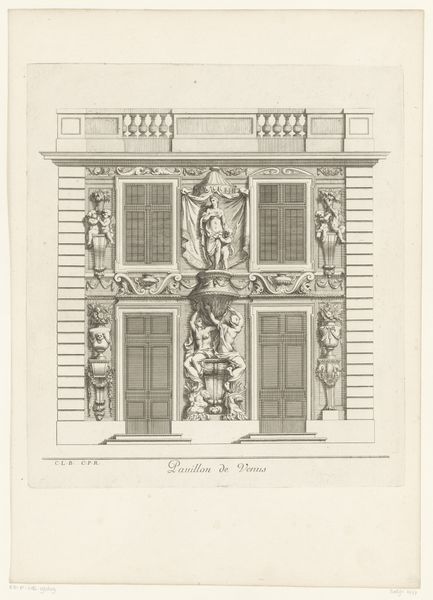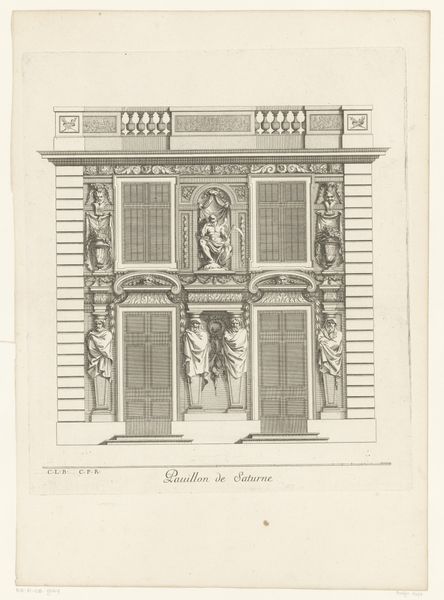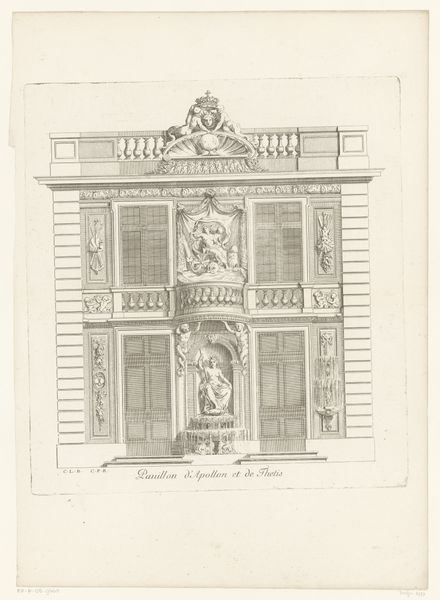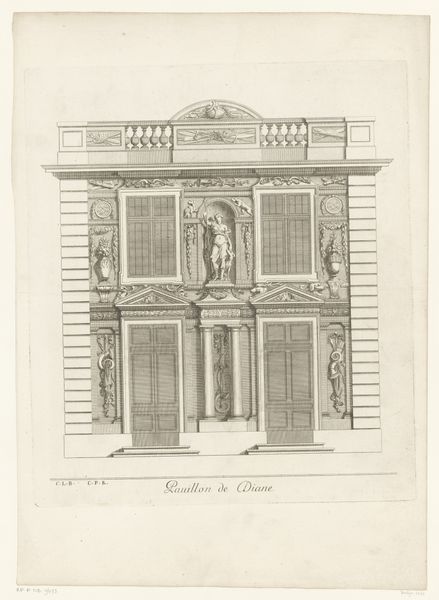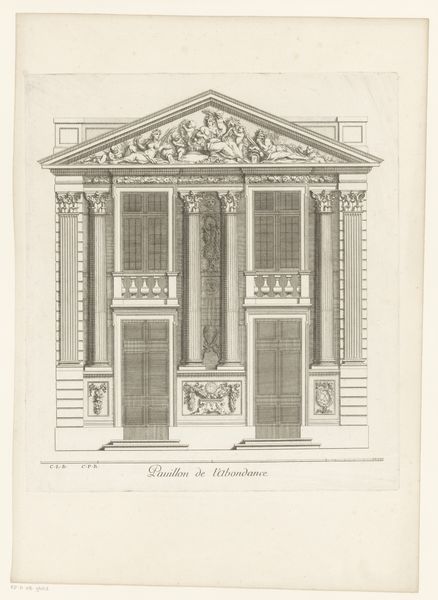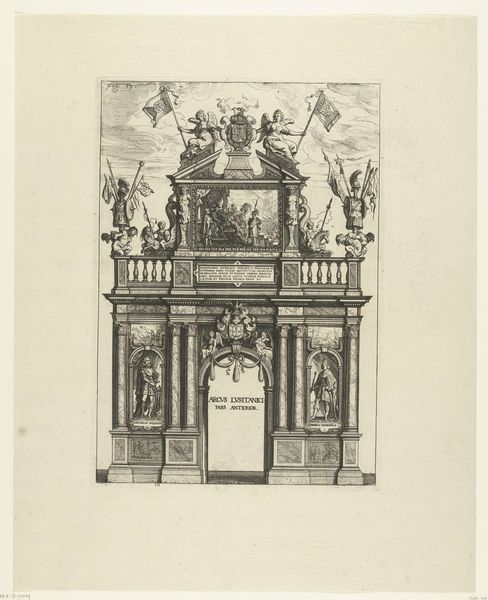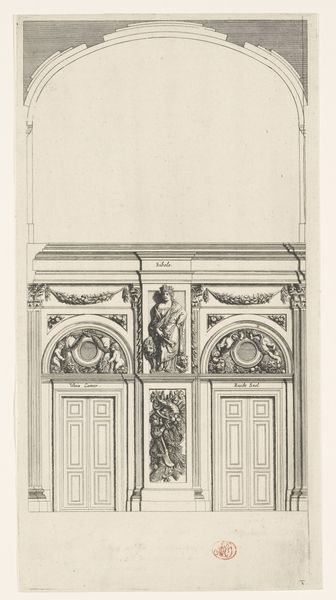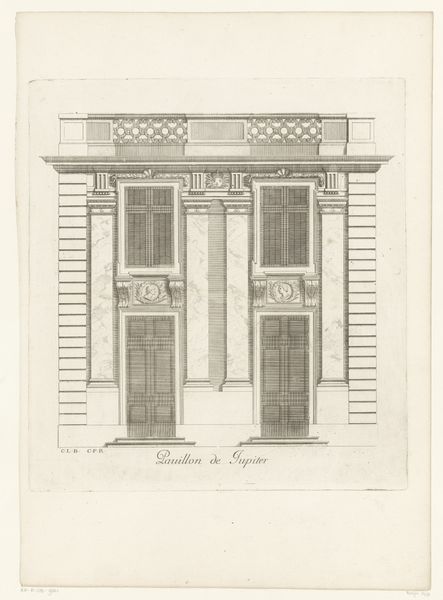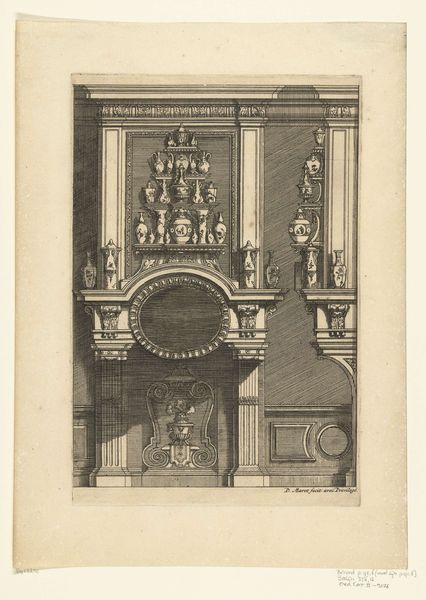
etching, architecture
#
baroque
#
etching
#
etching
#
form
#
geometric
#
line
#
history-painting
#
architecture
Dimensions: height 379 mm, width 344 mm
Copyright: Rijks Museum: Open Domain
Louis de Châtillon created this engraving of the Paviljoen van Mars using burin and etching. These processes involve the precise cutting of lines into a metal plate, which is then inked and printed. Note how the crisp lines of the engraving allow for incredible detail, from the architectural structure to the ornate decorations, capturing the essence of classical design and aristocratic patronage. The social context is paramount. The Paviljoen, dedicated to Mars, the god of war, was likely commissioned by a wealthy patron to showcase power and status. The act of creating this print means that the patron's vision could be efficiently reproduced and circulated. Engraving and etching were labor-intensive, demanding specialized skills. The level of detail suggests a highly trained artisan, reflecting a culture where craftsmanship was valued. Considering the materials, processes, and context, we appreciate how this print connects artistic skill with broader cultural values.
Comments
No comments
Be the first to comment and join the conversation on the ultimate creative platform.
